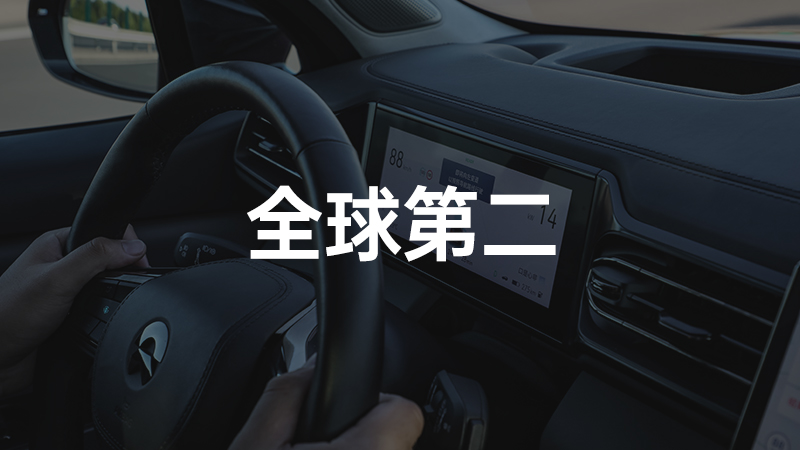Here is the English Markdown text with HTML tags preserved:
“This is a sentence I heard from two NIO employees before I actually tried NIO Pilot+Navigation on-board computer (NOP).
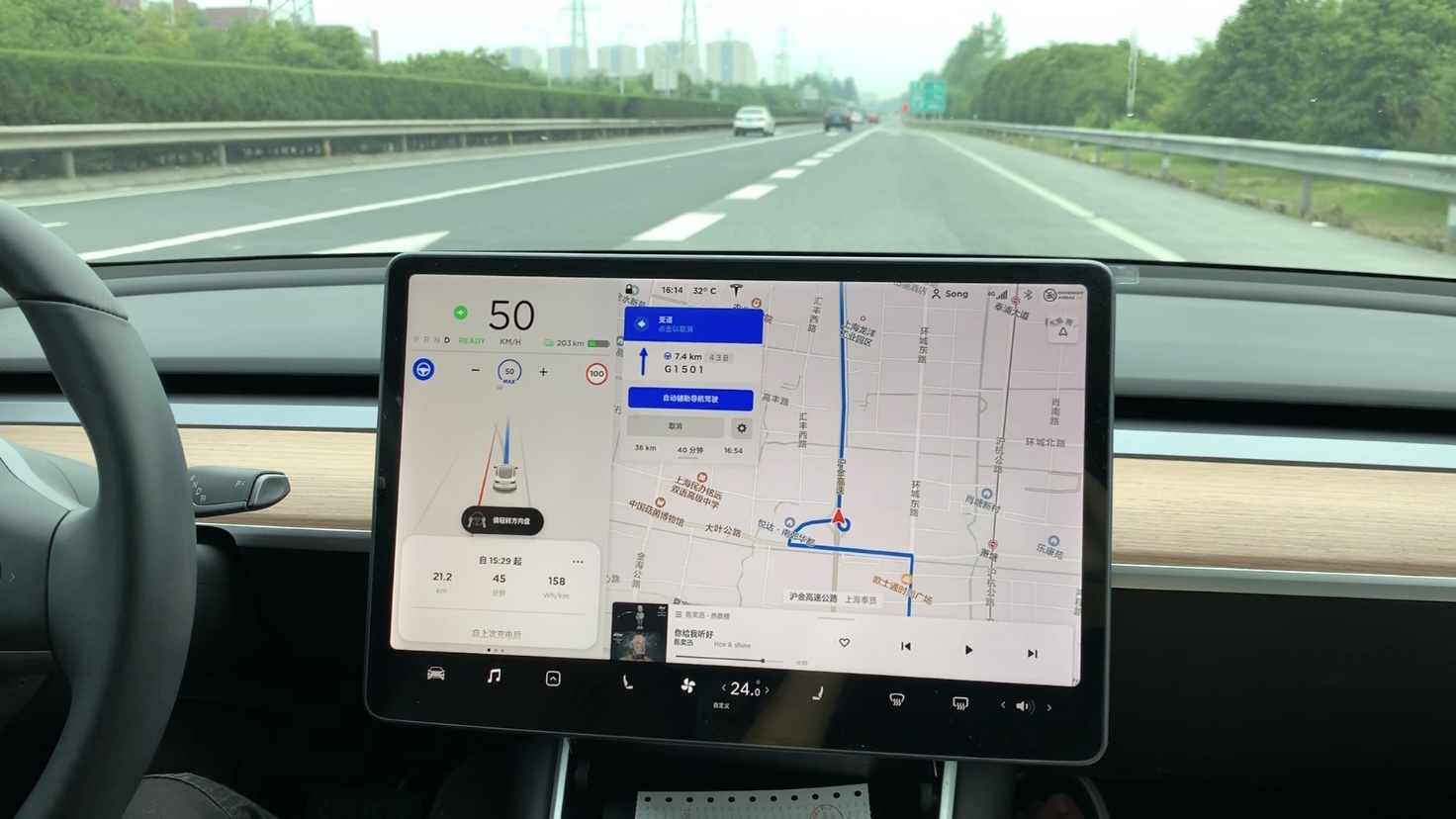
As a user who frequently drives Model 3 with FSD and has experienced Tesla’s Navigate on Autopilot (NoA) function, even though Tesla’s NoA has been pushed to North American users since October 2018 and underwent several optimizations in two years, I still don’t think the current NoA function is amazing.
NIO is the second automobile manufacturer globally that has implemented the Highway Pilot system. From the project launch in mid-2019 until today, Norwegian Oil Partners (NOP) has taken just over a year to develop.
Thinking back to our 42Mark test, NIO’s relatively conservative lane-changing strategy, my real thought was, is NIO Pilot+Navigation a semi-finished product that is about to be launched?
But after I experienced it, it indeed gave me some surprises. Compared to Tesla’s NoA, this is a navigation-assisted driving system that is more in line with China’s road conditions.
NIO Pilot + Navigate ≠ NOP
Before talking about the experience, let me briefly introduce what highway pilot system is.
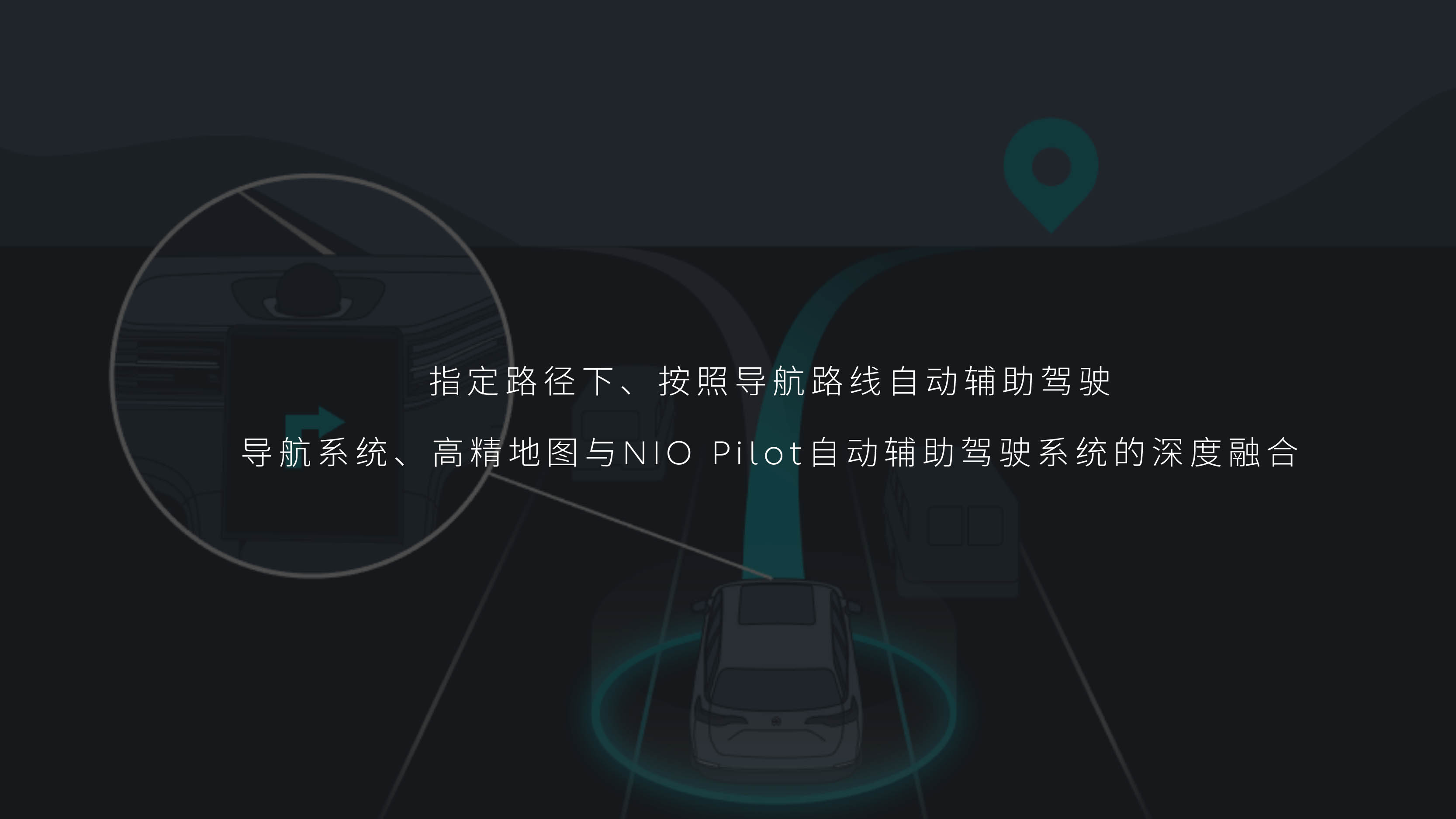
Actually, it is to add navigation data to the original auxiliary driving state, set the destination and drive from point A to B through auxiliary driving. However, due to problems with ability, algorithms, and safety, it can only be turned on in closed-type roads such as rings, viaducts, or highways.
For example, if I start from Lujiazui in Shanghai and drive to the urban area of Chengdu, when the road is in good condition, from entering the Yan’an elevated highway to entering the Chengdu urban area (open road), the highway pilot will automatically travel into and out of the entrance, as well as change lanes according to the navigation route, except for passing toll stations and some special scenes that hardly require manual intervention.
This can make driving easier for everyone and meanwhile enable the worry-free about going the wrong route and causing a waste of time.
So, isn’t highway pilot just auxiliary driving + navigation route?
Yes and no.”“`
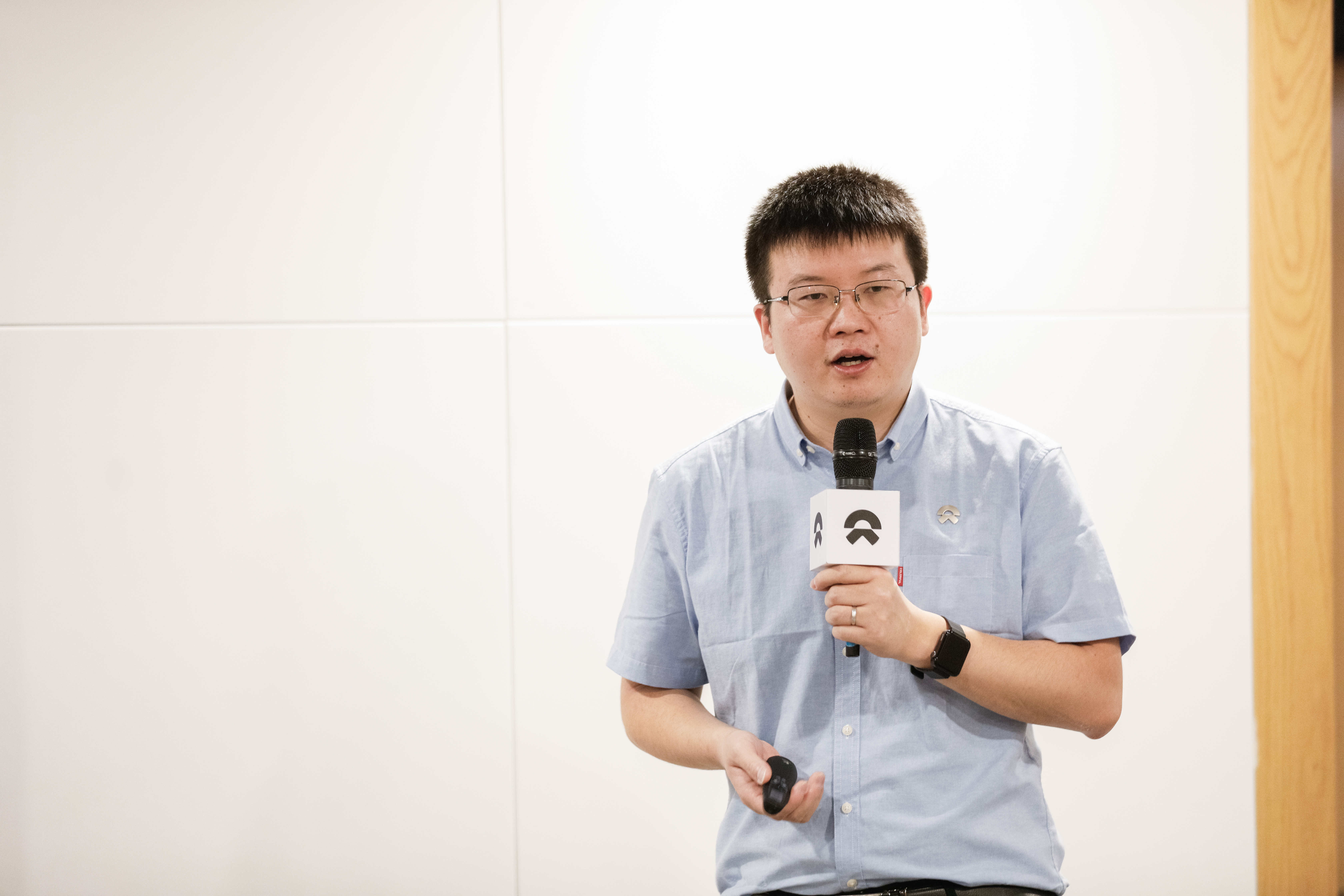
NIO’s head of autonomous driving, Zhang Jianyong, once stated during a workshop before test driving NOP that “from the perspective of the entire navigation assistance function scene design, simplicity can be understood as how a human driver navigates, merges onto the main road, adjusts to normal speed on the road, overtakes and changes lanes, and switches from one high speed to another. Our navigation assistance NOP can perform similar actions and complete the task for the driver.”
Obviously, if the functions of NOP are broken down, navigation is just one step, while entering and exiting the ramp, automatic speed adjustment, overtaking, and changing high speed (elevated highways, loops) are all determining factors for the safety and usability of NOP.
High-precision map implementation, safe and hassle-free
First, let’s take a look at the video of my actual experience.
Next, let’s examine each feature individually.
Entering and Exiting Ramps
Many people worry that when entering or exiting a ramp, due to the speed limit on the ramp usually being lower, there may be dangerous situations that arise when merging onto the highway.
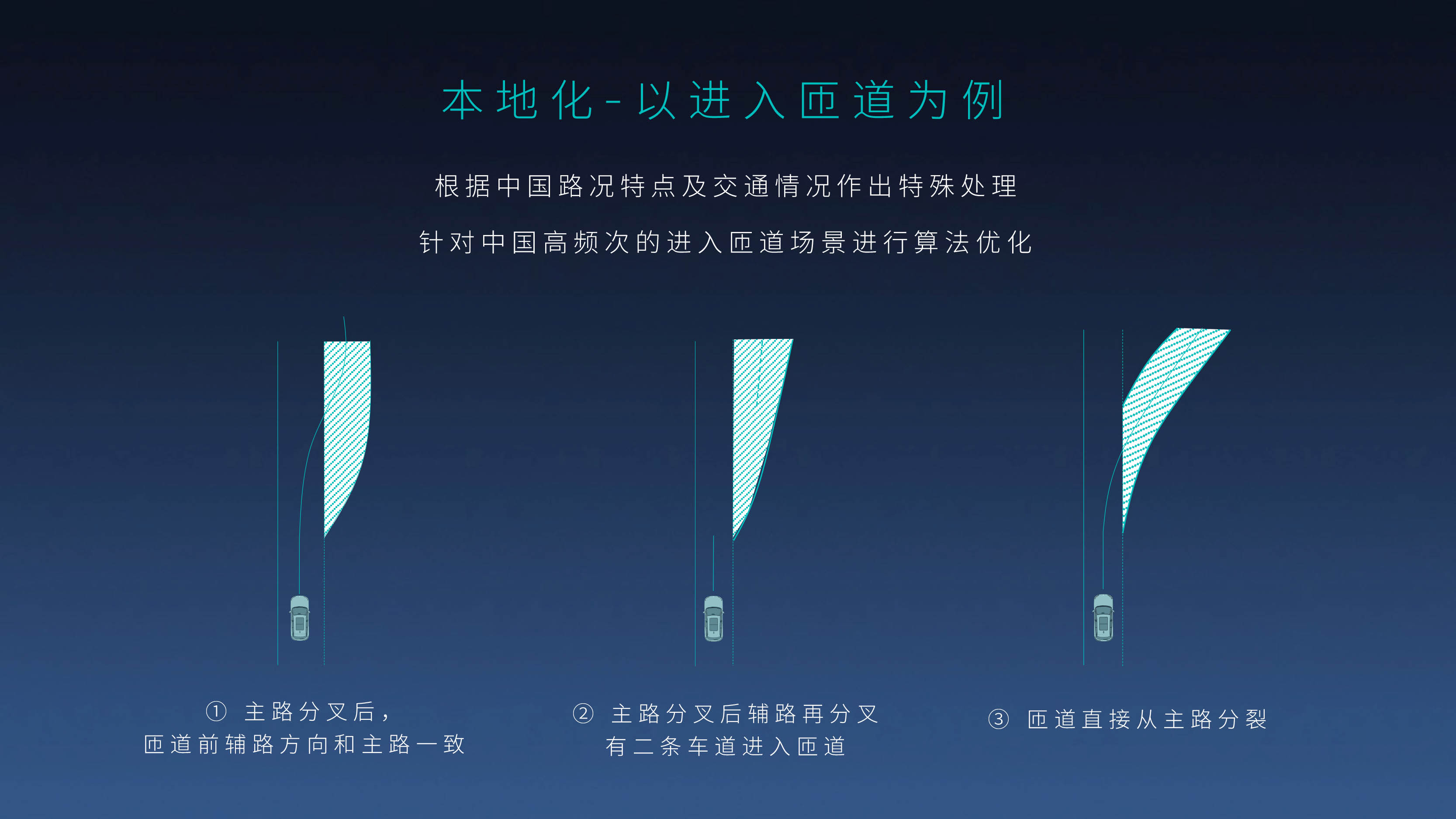
Moreover, there are N kinds of road situations when entering the ramp in China, such as directly entering the ramp when going straight, entering the ramp after changing 1 lane, and even entering the ramp after changing 2 lanes.From the video above, we can see that NOP will change lanes and enter the ramp ahead of time before entering the ramp, and slowly decelerate to a safe speed, passing through the curve smoothly and without human intervention.
It is worth mentioning that NIO has adopted Baidu’s high-precision maps, which makes many problems much simpler.
Let’s briefly talk about the advantages of using high-precision maps:
-
In addition to accurate road structures, high-precision maps also include road slopes, curvatures, speed limits, and even surrounding obstacle structures.
-
Vehicle assistance cameras and millimeter-wave radars have a detection distance of only over 100 meters. However, when combined with high-precision maps, it can perceive a longer distance.
Moreover, NIO’s vehicles have achieved lane-level positioning, and the highest accuracy can reach 20 centimeters. The vehicle can accurately know which lane it is on.
Based on the above conditions, in the scenario of entering and exiting the ramp, NOP already knows what kind of ramp it will face, what kind of curved roads, and can change lanes, decelerate, and pass through curved roads at the optimal speed based on high-precision map data. NIO only needs to optimize the experience based on different ways of entering and exiting the ramp.
Automatic speed adjustment
In fact, this has been mentioned in the high-precision map part of entering and exiting the ramp. After all, high-precision map data includes accurate speed limit information. When the vehicle’s high-precision positioning matches the map, the vehicle will immediately adjust the speed limit to the current maximum.
In addition, since the high-precision map also includes curvature information, NIO can increase the speed of passing through curves while ensuring safety.### Overtaking & Lane Change
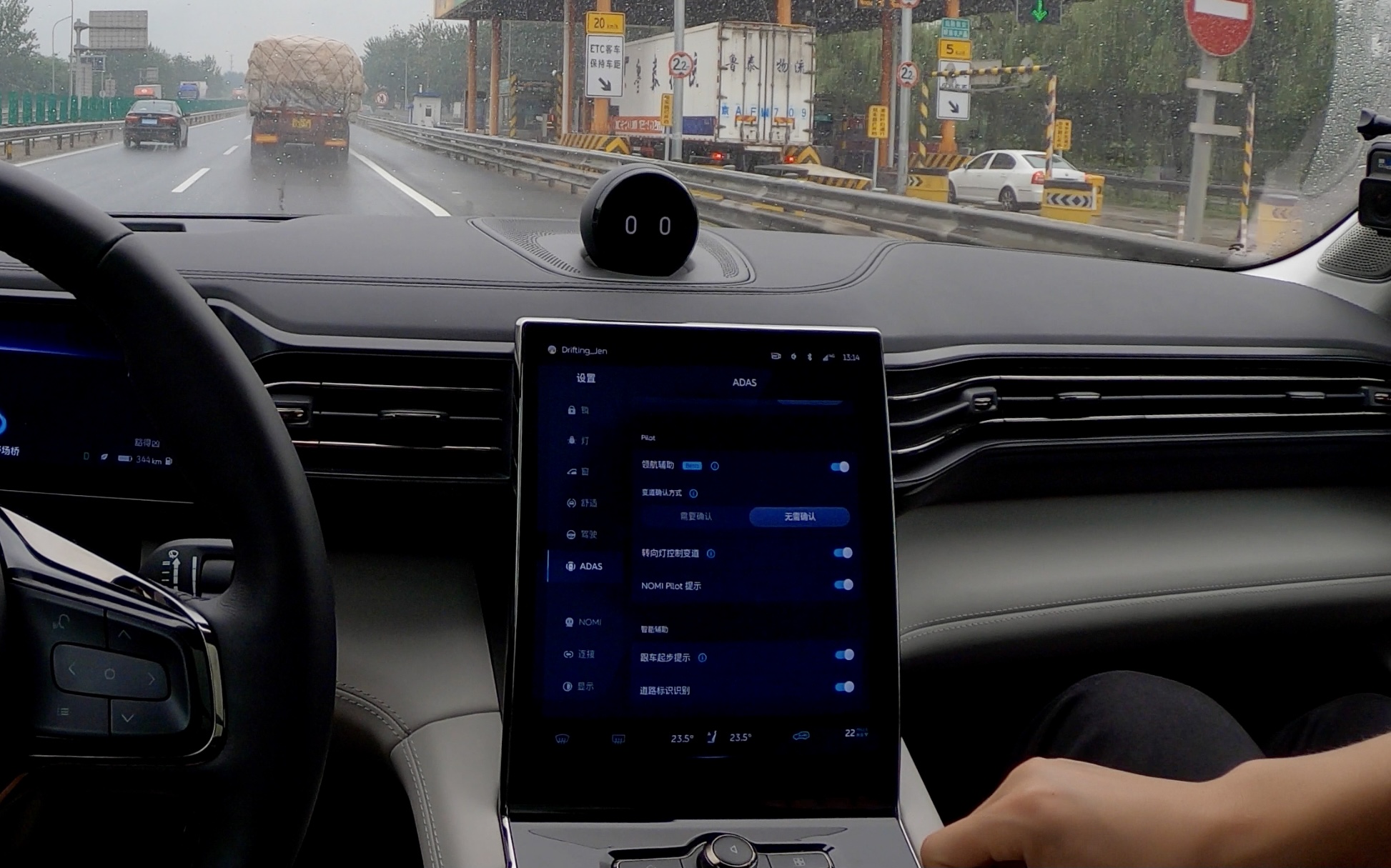
Compared to traditional cameras, this method is not only faster, but also more accurate, which can avoid misrecognition caused by road repair and other special situations.
Although both NOP and NoA can perform lane change automatically without confirmation, the experience is not ideal due to the large speed difference required and the long judgment time needed.
When we drive normally, if we encounter a slow car in front and the two lanes are relatively empty, we will change lanes and overtake in a very short time, and may even have changed lanes while shortening the distance to the front car.
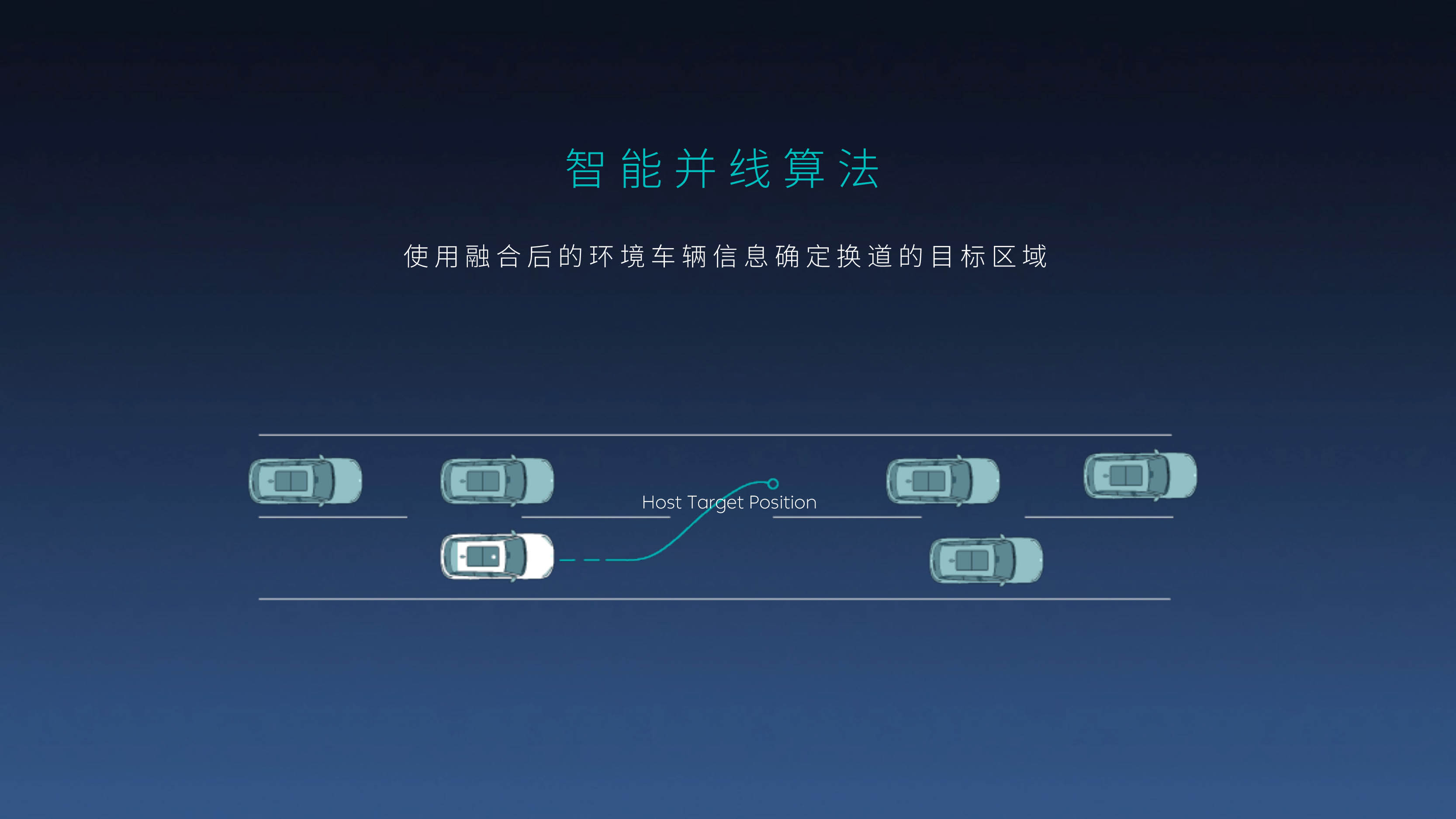
However, the current assisted driving systems do not have many human-like predictive abilities, so they can only comprehensively judge based on the speed difference from the front car, the current speed, the road speed limit, and the speed difference from the vehicles in the adjacent lane.
Based on my actual experience, the speed difference of NOP lane change is about 15-20 km, and it takes a certain time to change lanes, so if there are slow cars in front on relatively empty roads, it may still feel a bit uncomfortable. If you are really in a hurry, it is recommended to manually trigger the turn signal and change lanes to overtake.
Ps. Manually triggering the turn signal and changing lanes will not exit NOP.
Lane Change in Advance
For this point, friends who haven’t experienced NOP and NoA may not know what I mean.
Simply put, if we need to switch from one highway to another and drive by ourselves, according to the navigation, there may still be 500-1000 meters before we reach the far right lane, which is convenient for entering the entrance ramp.
However, it is difficult for vehicles to achieve this extreme, so ample redundant space needs to be left. NOP’s strategy is to start changing lanes to the far right lane 2 kilometers in advance, which can effectively avoid congestion or other special situations that may cause the right lane to be missed.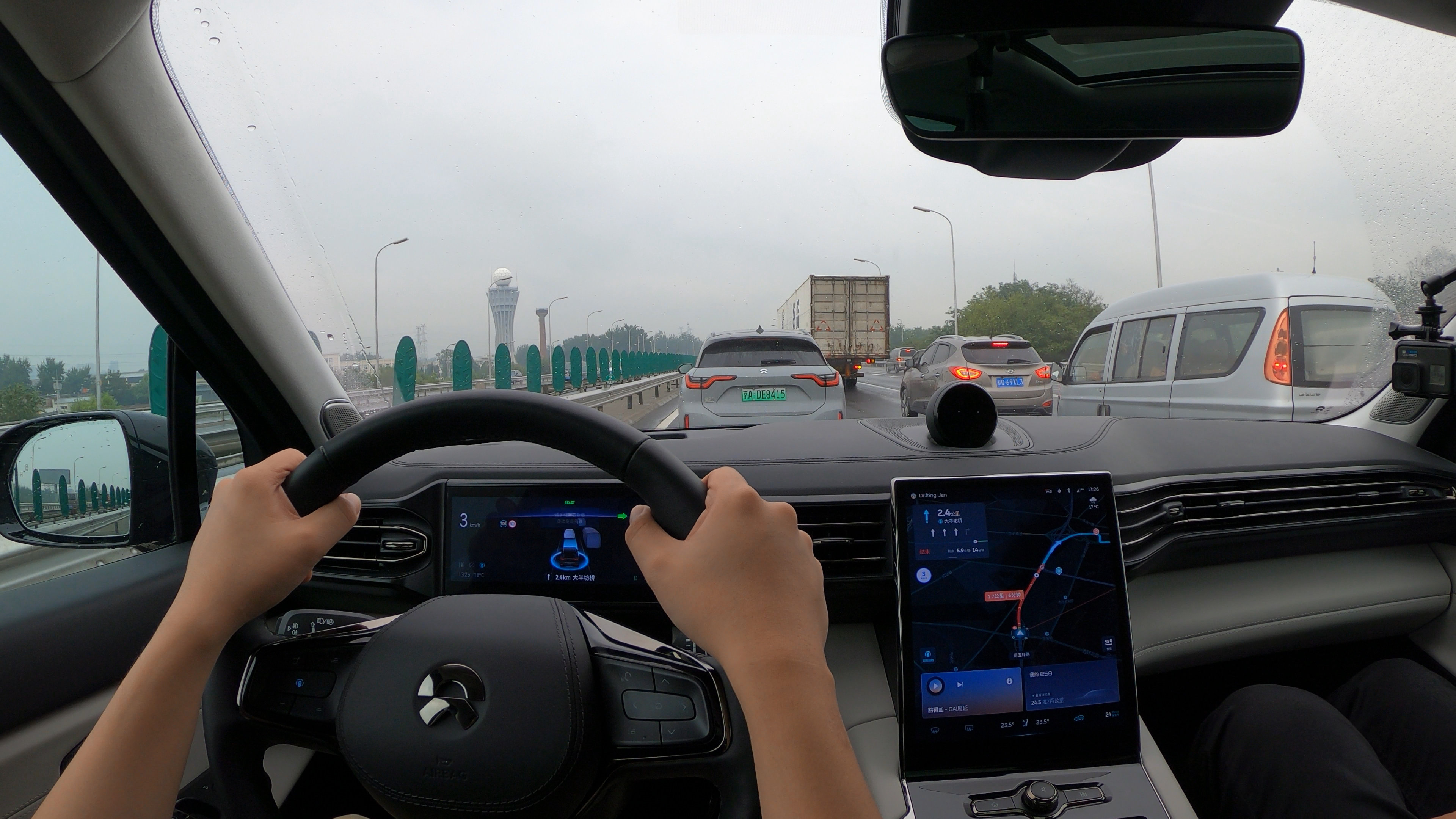
However, in daily driving, especially on urban ring roads, the right lane before changing lanes often gets congested. At this time, although NOP will actively slow down and continue to try to change lanes, this scene is still too difficult for it. It is better for everyone to temporarily switch back to manual driving.
However, this is ultimately an assisted driving function, which can help everyone in most scenarios, and that is enough.
In addition, there is one point that needs to be optimized.
In the car interface, as long as the leading navigation assist is turned on, the planned route will cover as many closed roads such as ring roads, overpasses, and highways as possible, without considering the traffic congestion situation and planning the fastest route.
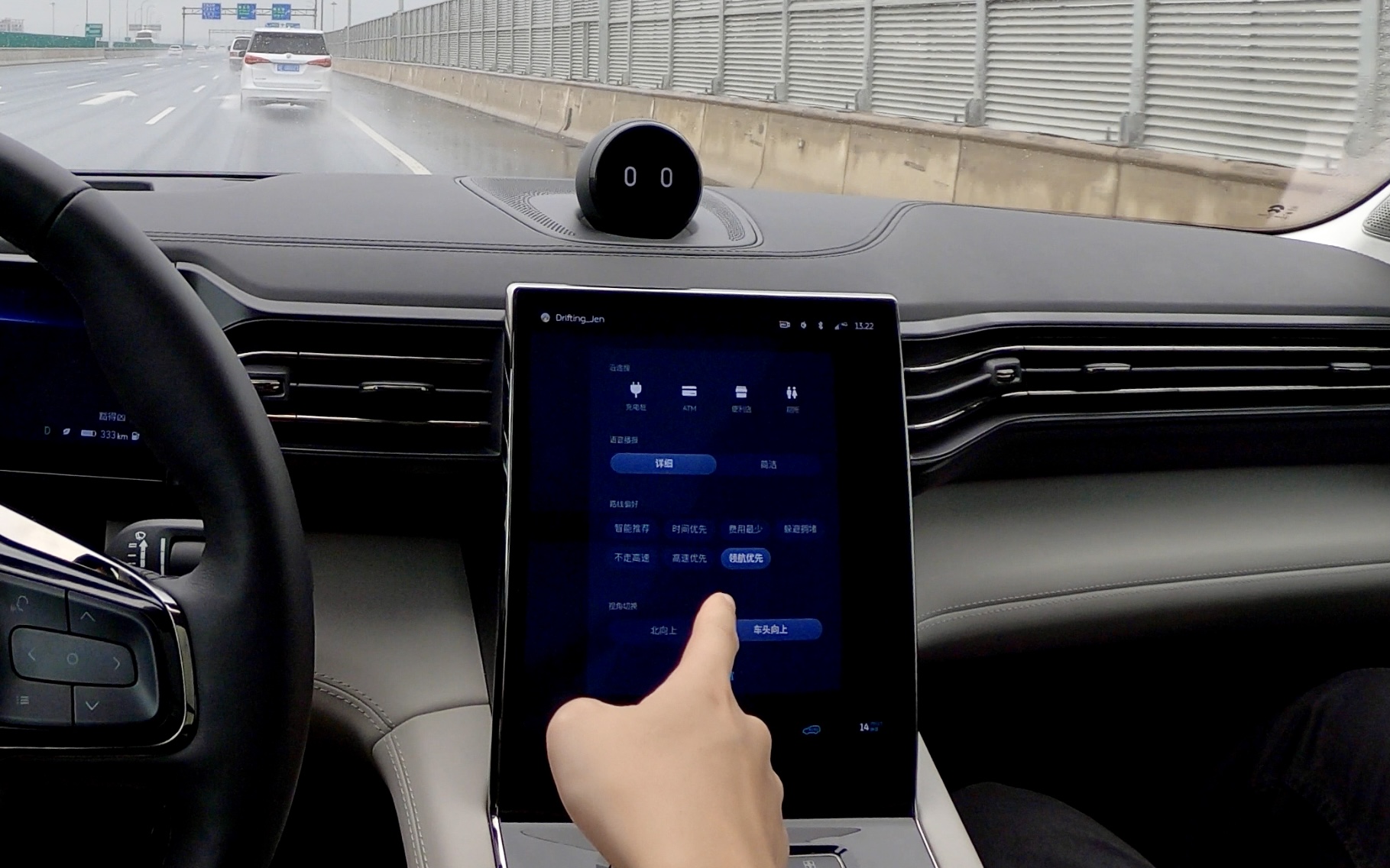
For example, if there is a serious traffic jam on the Yan’an overpass due to a traffic accident, and the ground road is relatively more time-saving, NOP will still prioritize the overpass route, which may save some energy but waste a lot of time, feeling somewhat outweighed.
NOP VS NoA, leading 2 to 1
Currently, only Tesla’s NoA and NIO’s NOP have implemented such functions globally. Obviously, comparing NOP with NoA is also a matter of course.
Of course, NIO also knows this. On the day of experiencing NOP, they also brought us several Model Xs equipped with FSD, and quickly switched from NOP to NoA, leaving me with a more profound impression.
Let’s summarize the advantages and disadvantages of NOP for everyone.
Advantage 1 – Range of application is far ahead
NOP uses high-precision maps, and as long as the high-precision maps cover highways, ring roads, and overpasses, they can be opened. Unlike Tesla NoA, which can only be opened when entering real highways.
In short, NOP can be normally used for roads such as Shanghai Inner Ring, Middle Ring, Outer Ring, Yan’an Overpass, and so on, while NoA can only be opened on real highways such as Beijing-Shanghai, Shanghai-Kunming, and the like.
However, there is an exception for NOP in Beijing. Due to national laws and regulations, high-precision map data within the 5th Ring Road is not available, so friends in Beijing are indeed a bit embarrassing…
Advantage 2 – Rich voice and visual interactionBelieve friends who know about Tesla are aware that it is very weak in voice interaction…and this happens to be an advantage for local new car makers such as NIO, LI and XPeng.
During the NOP development stage, NIO has deeply integrated with NOMI. Not only does it have rich instrument information display during automatic lane changing, entering or exiting the NOP, NOMI will also broadcast simultaneously.
Below are some of the voice interaction situations I encountered during my actual experience.
Because of the language prompts in the video above, drivers can understand what action the vehicle is about to take, and make sufficient mental preparation.
As for Tesla’s NoA, I can only describe it with four words, “Silence is Golden”, especially for users who are not familiar with NoA, it is not very user-friendly.
Disadvantage 1 – A conservative lane changing strategy
Let’s first clarify a problem that this is an issue with NIO Pilot itself, but frequent lane changing is inevitably required in NOP, so this is indeed a relatively big disadvantage.
Whether it is in our daily experience or in our 42Mark test, Tesla has a huge advantage in lane changing compared to other models.
Not only is the execution speed fast, but the recognition of rear vehicles is accurate, and the distance for changing lanes when there is a car behind is also relatively short. To put it simply, situations when humans can change lanes in daily driving (non-congested scenarios), Tesla can also do it, and there are very few situations where lane changing is not successful. It can be said to be “fast, accurate, and stable”.
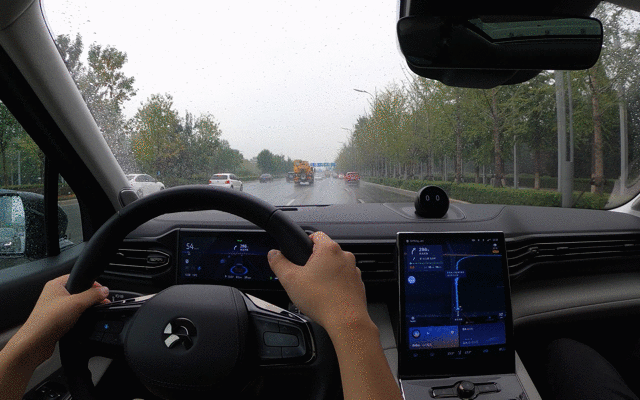
However, NIO requires about half a second to judge whether it can change lanes when changing lanes, and in scenarios with heavy traffic, the lane change opportunity is fleeting, so the success rate is relatively low.# “Localization” wins again
Here is a summary of the usage scenarios of NOP.
“While there is a competitive process in overtaking lanes, the assistant driving system cannot create a competitive and gaming environment proactively. From the perspective of an assistant driving, we cannot compete with other cars in order to stay safe, we must maintain a relatively safe and conservative strategy through the design.”
I completely agree with this paragraph, emphasizing that the top priority for assistant driving is “support” and safety. However, I hope that NIO’s autonomous driving team can further optimize how to better execute lane changes while ensuring safety in future iterations.
Due to our conservative lane change strategy, the driving experience in congested scenarios will inevitably suffer. However, if your aim is to relax and unwind after a long journey or avoiding rush hour, NOP will always be your helpful assistant.
Comparing with Tesla’s NoA, we can see that in some aspects, NIO NOP is indeed leading.
However, the “victory” in the subtitle does not refer to NIO beating Tesla, because I consider this to be meaningless.
Zhang Jianyong said in the final stages of the workshop that “we also want to convey a concept. Currently, lane-keeping assistance is not completely autonomous driving. For all automated driving assistance systems, the driver must still control the vehicle at all times, and the system plays an assistant role. After all, there are still some scenes that are uncontrollable, such as temporary road repairs and other exceptional scenes that need to be constantly monitored by the driver during use.”
At present, whether it is Tesla or NIO, it is difficult to deal with these special and complex scenarios. It is precisely because of the existence of these special scenarios that everyone is still in the passable stage, and there is still a long way to go to become excellent.
For me, the “victory” in my heart lies in “localization.”
After all, thinking back to June last year, the delayed NIO Pilot function was officially launched after more than a year.
But in less than a year and a half, NOP, from functional definition to development, to testing, to final functionality, was all independently developed by NIO. It has exceeded my expectations with its current experience, proving that NIO’s autonomous driving research and development team has entered the right track and is in a rapid state of development.
Of course, localization optimization is the most important factor of accomplishment in this regard.By enabling automatic lane change, Tesla demonstrates its strong algorithmic abilities. Compared to Tesla, NIO is somewhat lagging behind in terms of chips and algorithms. However, in daily traffic environments, every country’s laws and regulations and the driving habits of local people possess strong regional characteristics. Tesla simply transplanted the logistics of American Autopilot to China, which can lead to some compatibility issues.
In contrast, NIO NOP has made numerous improvements in localization. According to Zhang Jianyong, “We have marked all special scenarios encountered during road tests. Currently, there are already over 32,300 such scenarios. This map shows our road test in Shanghai, with all the marked dots indicating special scenarios. Actually, there are already over 10,000 dots in Shanghai alone. We conducted tests covering over 30 key locations throughout China, and iterated the testing software three times.”
Moreover, the total mileage of NOP vehicle tests is currently only 300,000 kilometers. Although the actual mileage may not be enough, we believe that targeted optimizations have been carried out for scenarios such as entering and exiting the ramp, intelligent adjustment of speed limits, voice interaction, and even some special scenarios. This fills in some of their shortcomings and provides a better experience for users.
Finally, I would also like to send a message to NIO car owners who are about to receive the push notification: “Do not have overly high expectations for NOP.” The best user experience is yet to come.
This article is a translation by ChatGPT of a Chinese report from 42HOW. If you have any questions about it, please email bd@42how.com.
